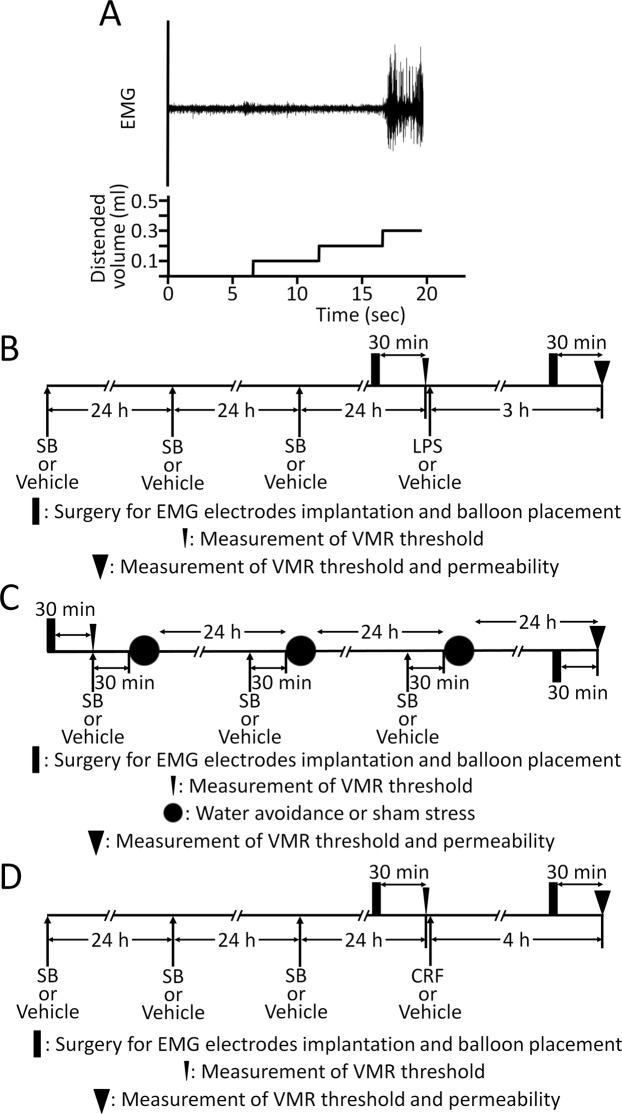Figure 1.
(A) Threshold of VMR determined by the distended balloon volume (ml) inducing apparent sustained abdominal muscle contractions. Demonstrable EMG recording is depicted. The threshold of VMR was 0.3 ml in this animal. (B) Schematic representation of the experimental protocol to explore the effects of SB on LPS-induced visceral changes. Colonic instillation of SB or the vehicle was performed for 3 consecutive days. The basal VMR threshold was measured 30 min after surgery for implanting EMG electrodes and placing the balloon, i.e. 24 h after the last enema. Then, LPS (1 mg/kg) or the vehicle was administered. Later, surgery and balloon placement were performed again, and the threshold was measured 3 h after injection followed by the measurement of colonic permeability. (C) Protocol for determining the effects of SB on repeated WAS-induced visceral changes. Thirty minutes after SB or the vehicle enema, the rats were subjected to either WAS or sham stress for 1 h. These treatments, i.e. enema and stress, were performed for 3 consecutive days. The basal threshold was measured before the initial treatments. The second threshold measurement was performed 24 h after the last stress session followed by the measurement of colonic permeability. (D) Effects of SB on CRF (50 µg/kg)-induced visceral changes were also determined. The measurements of the second threshold and colonic permeability were examined 4 h after injection of CRF or the vehicle.

